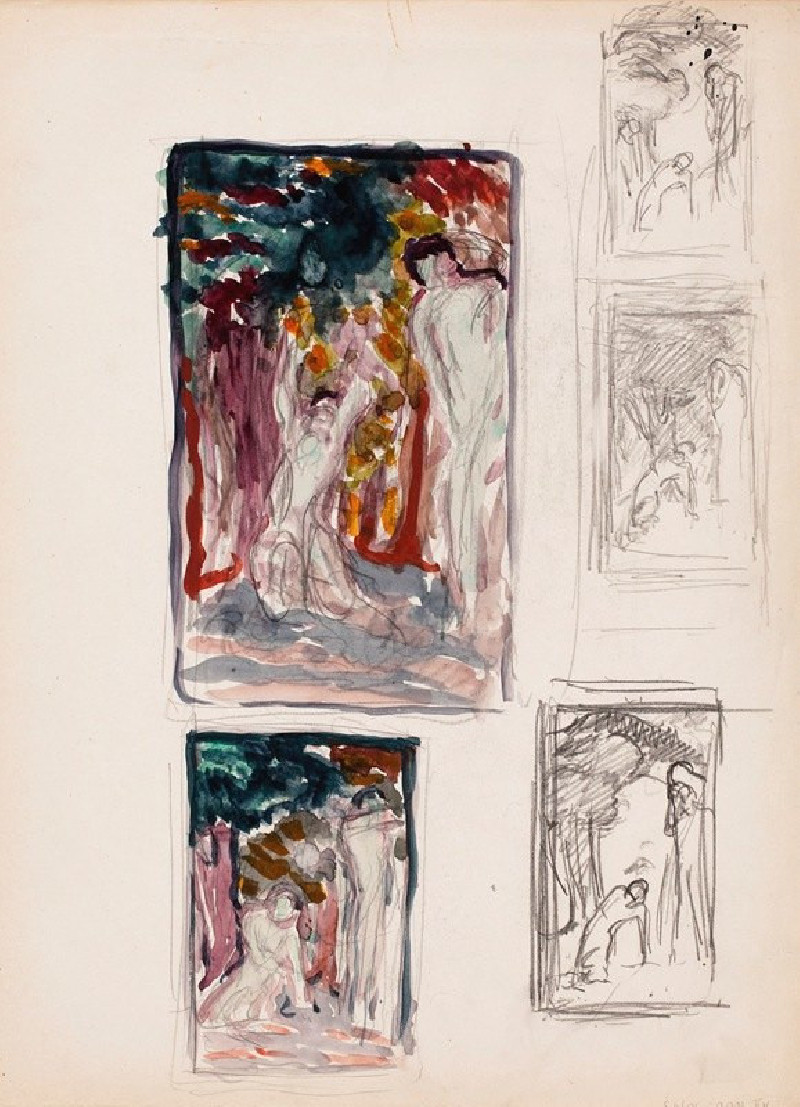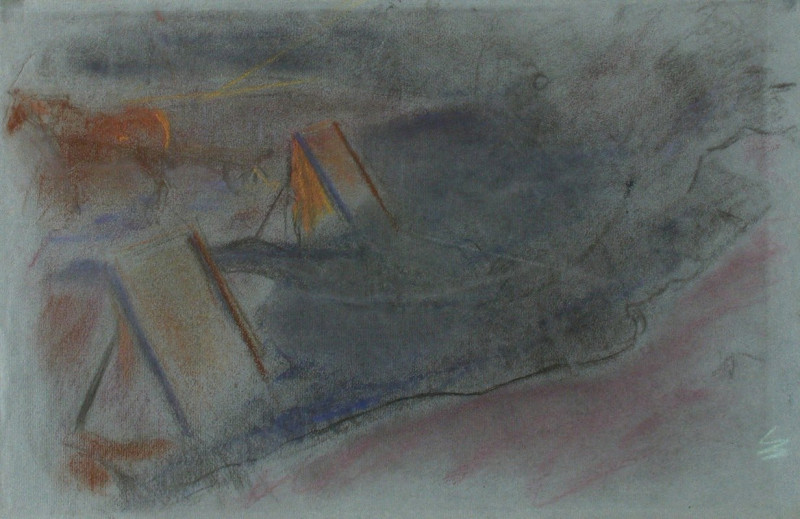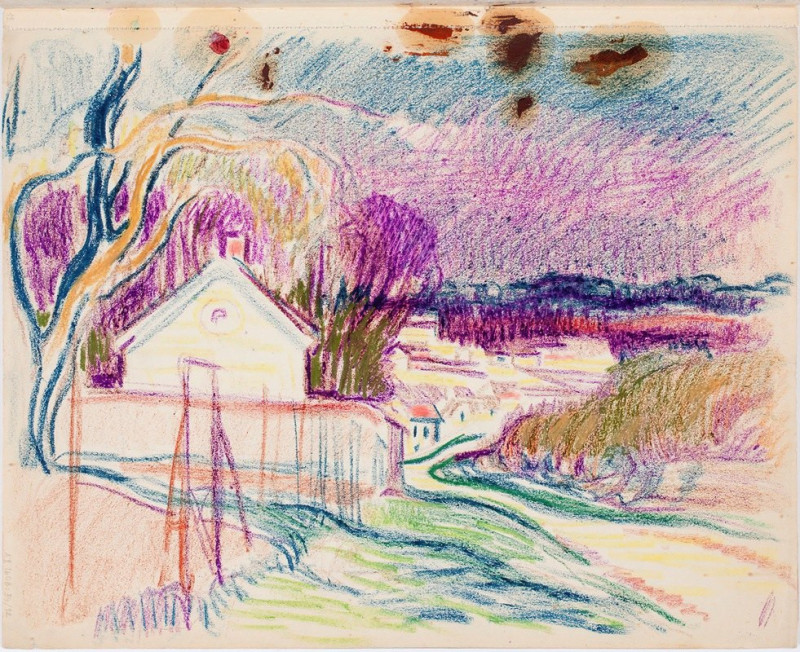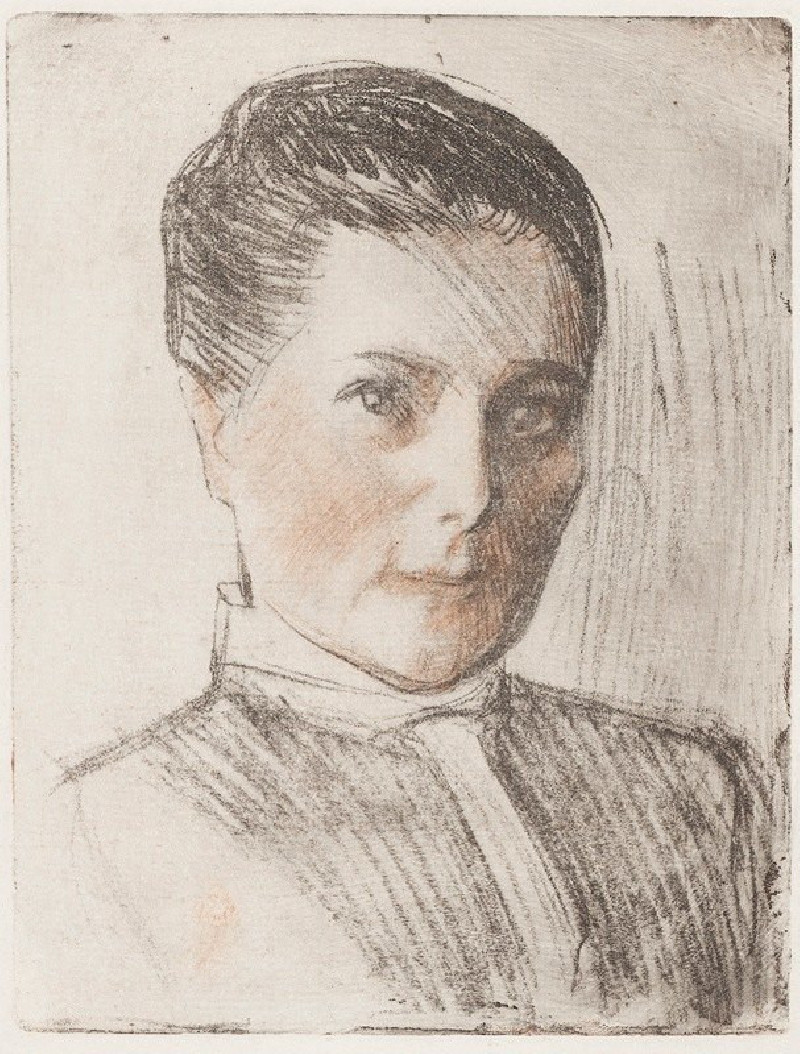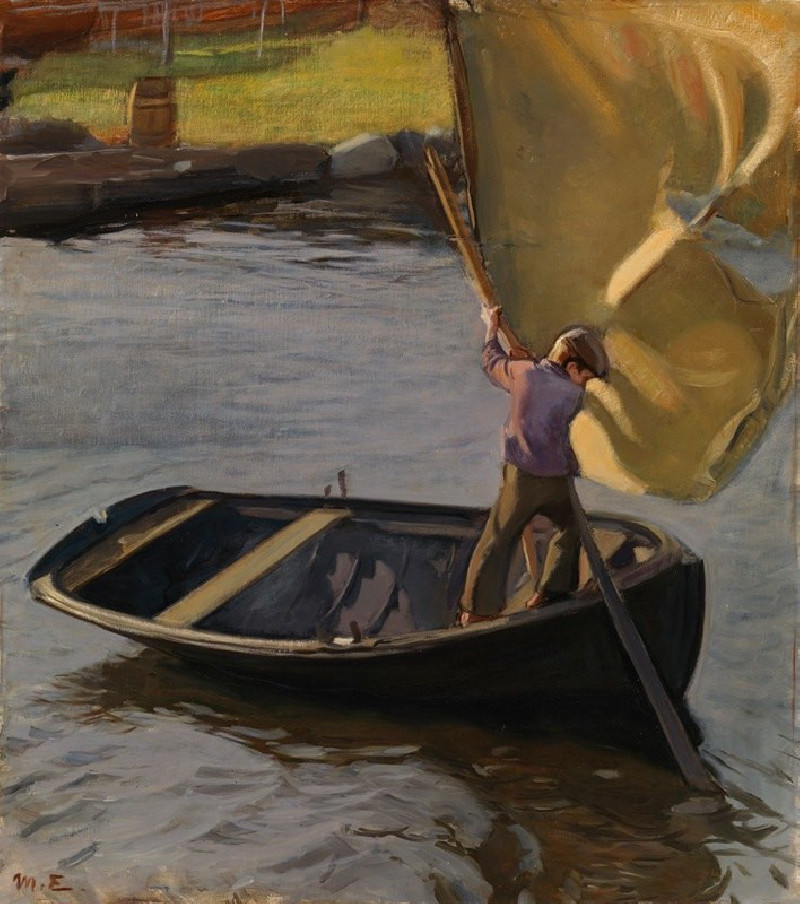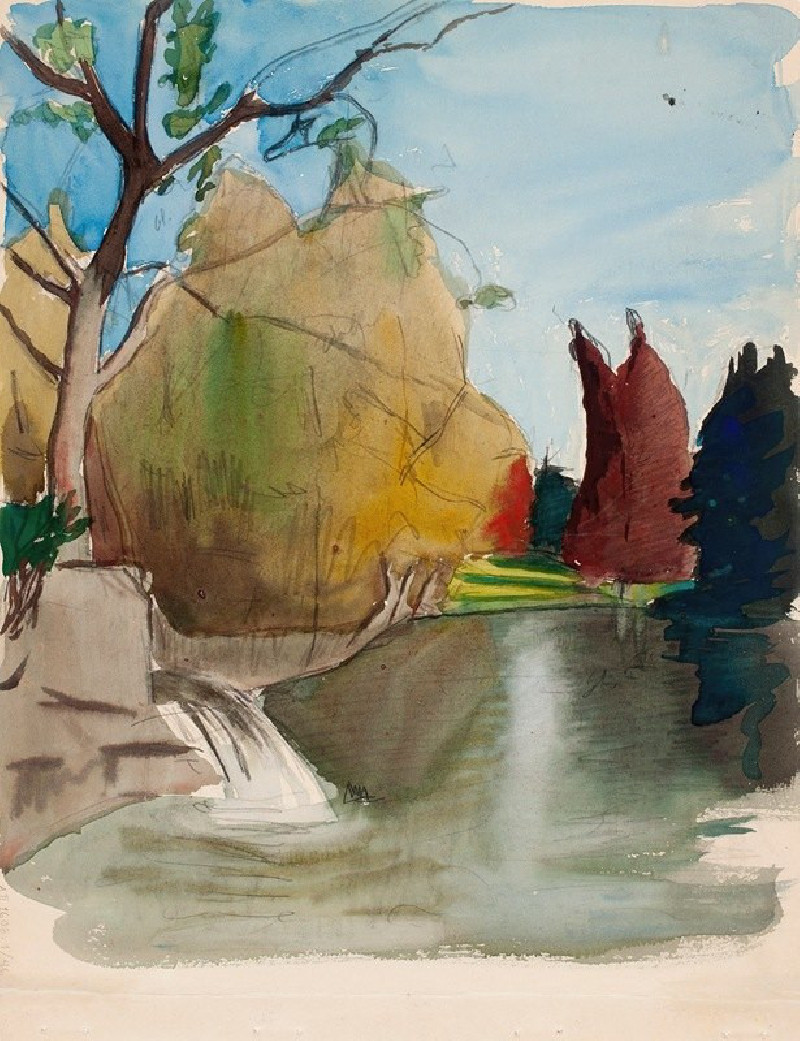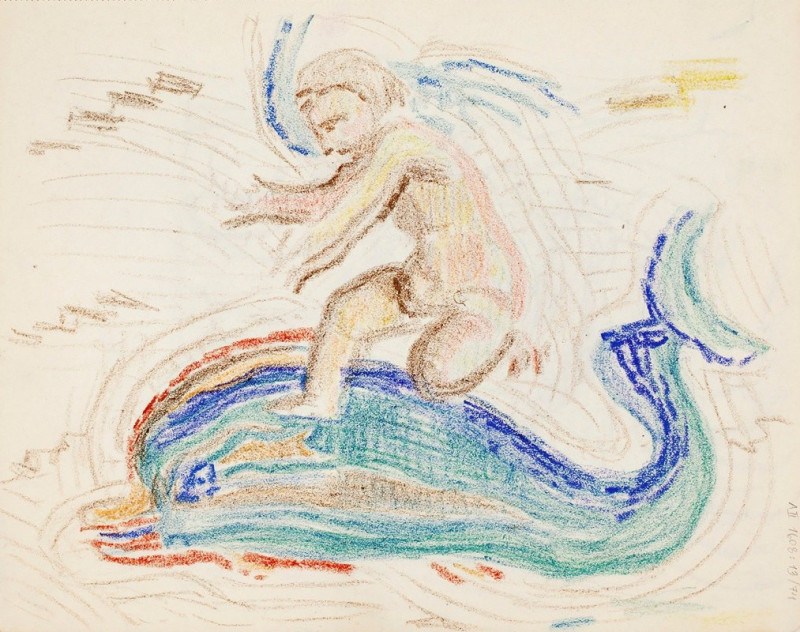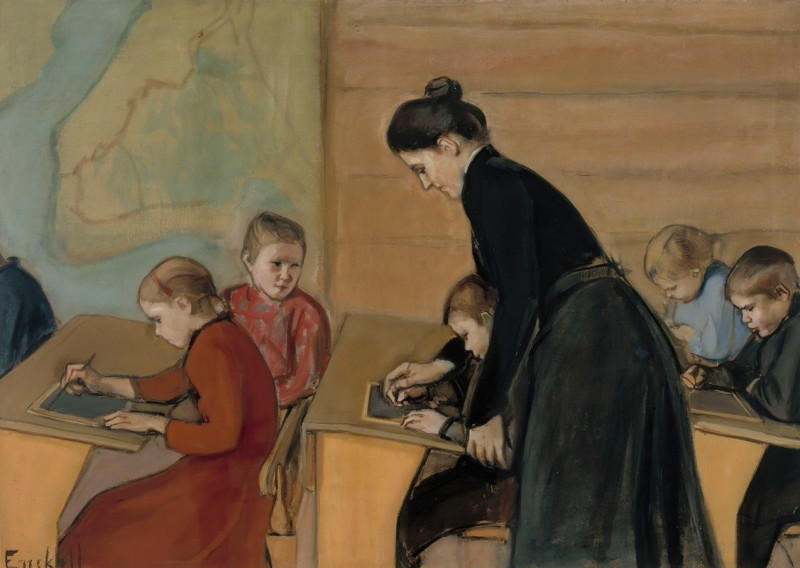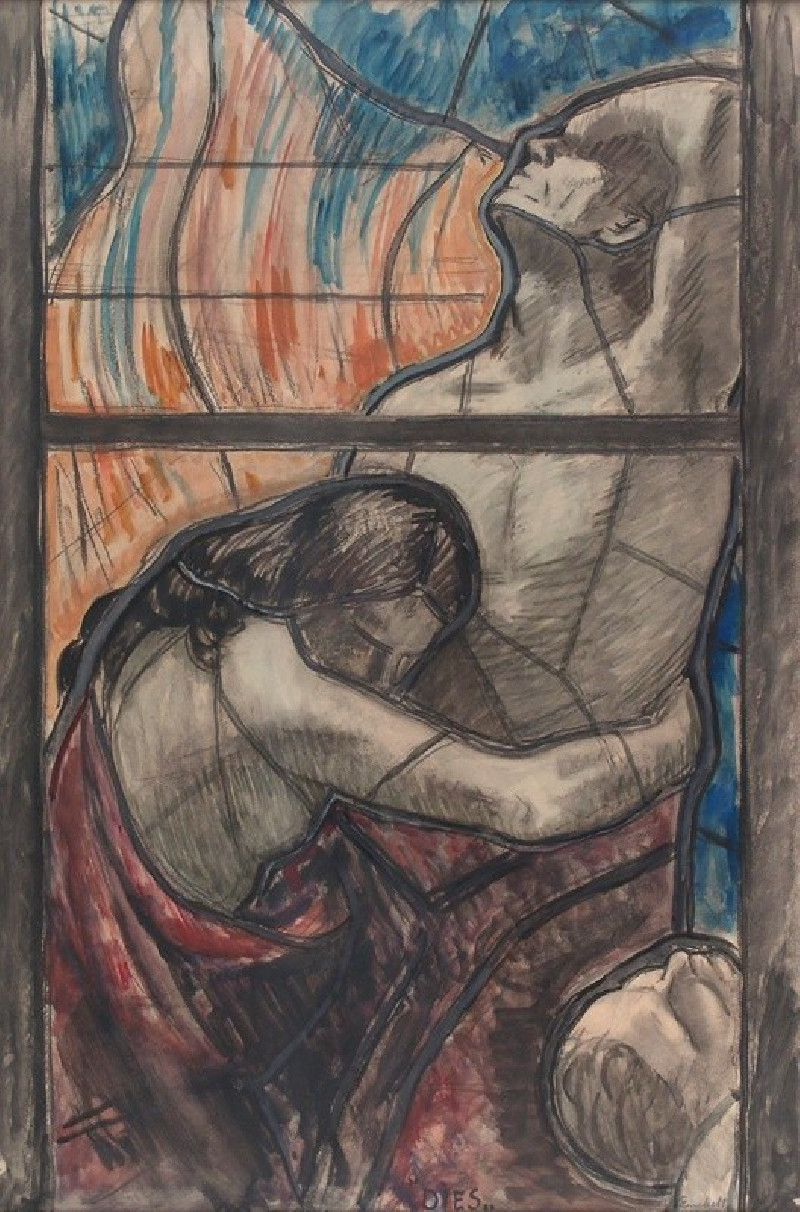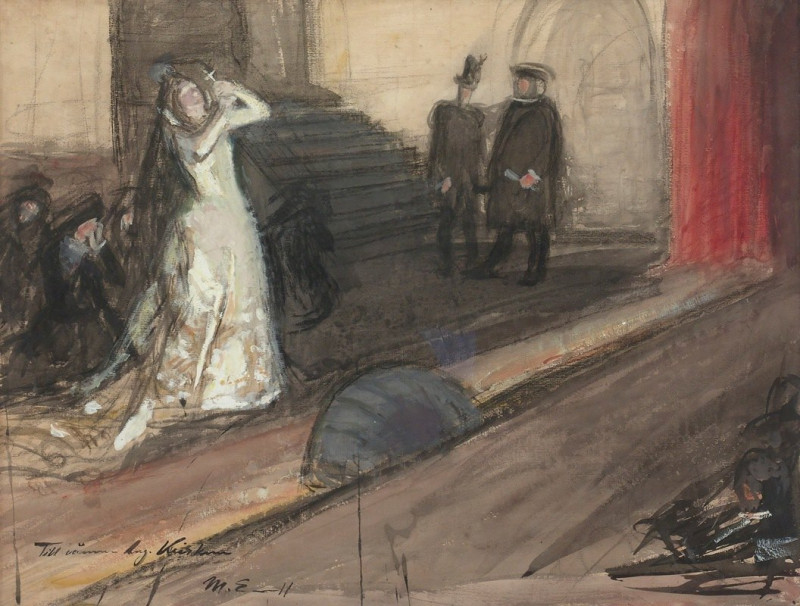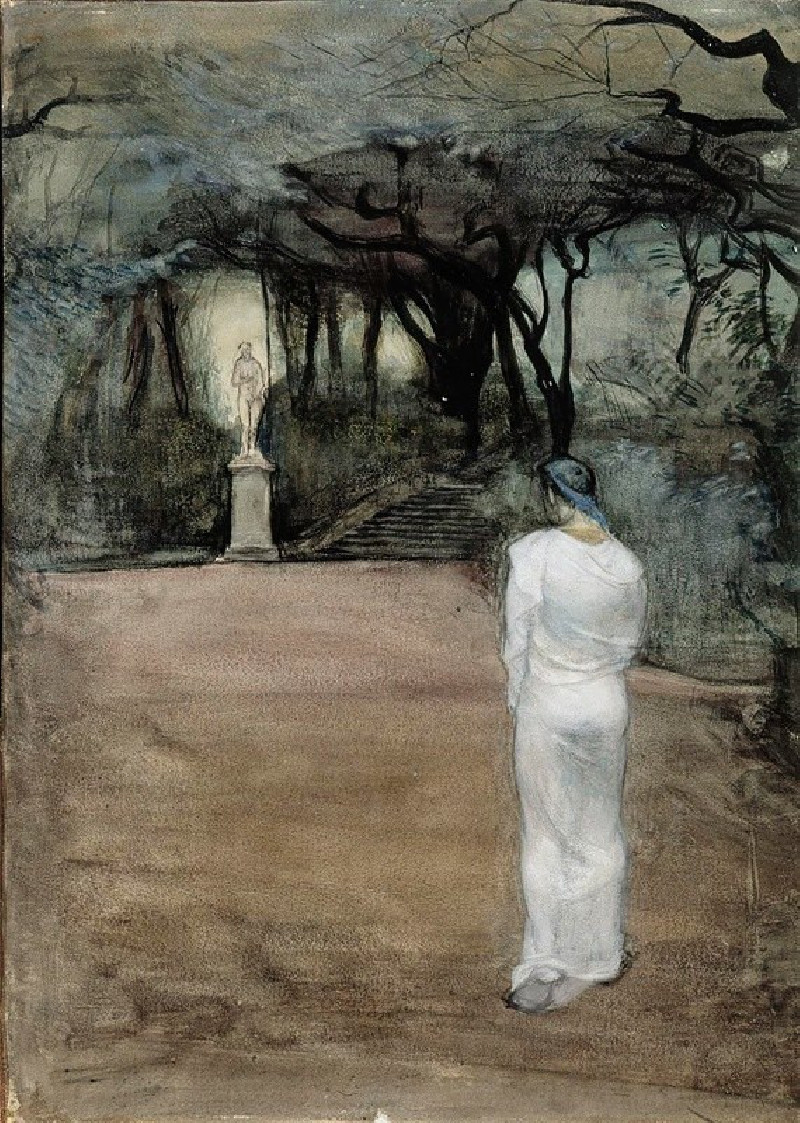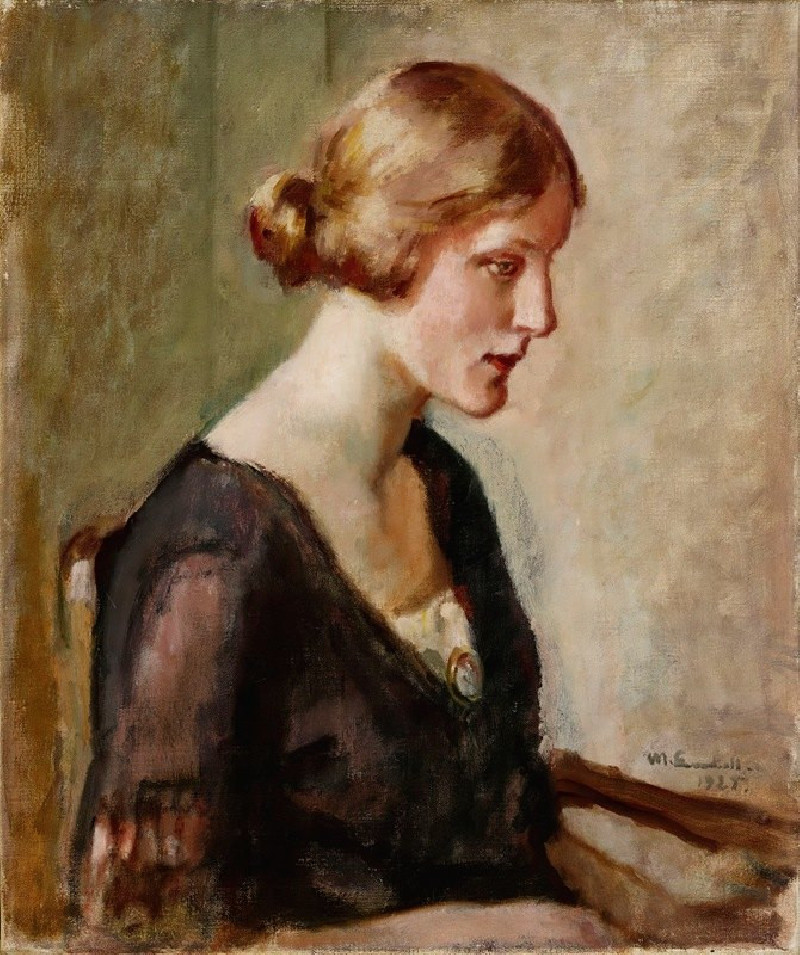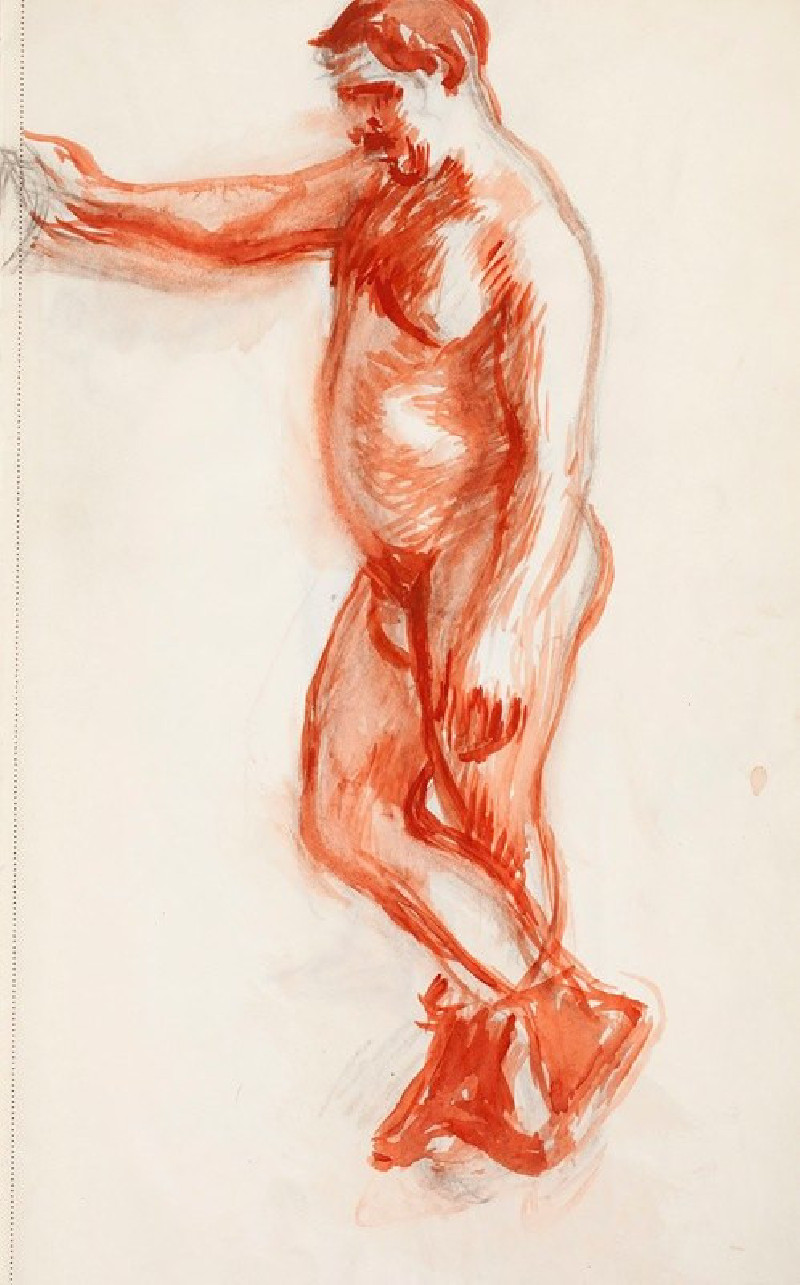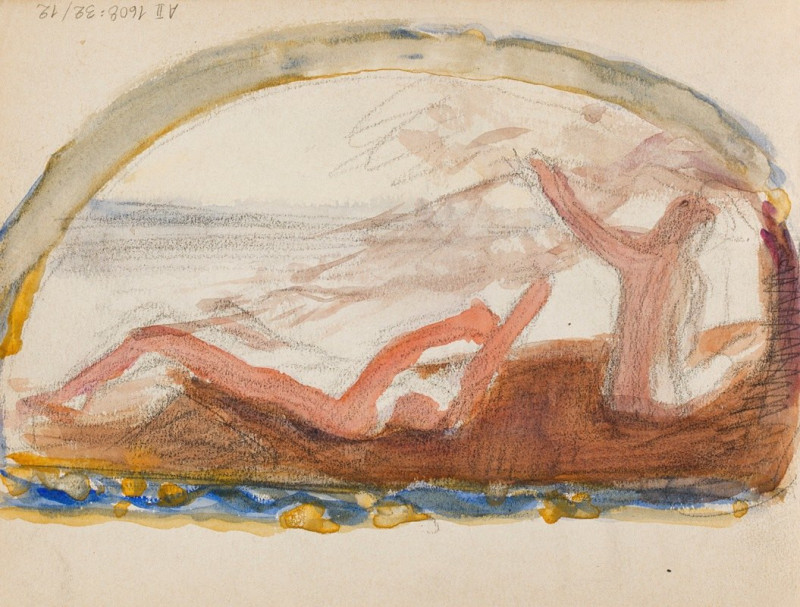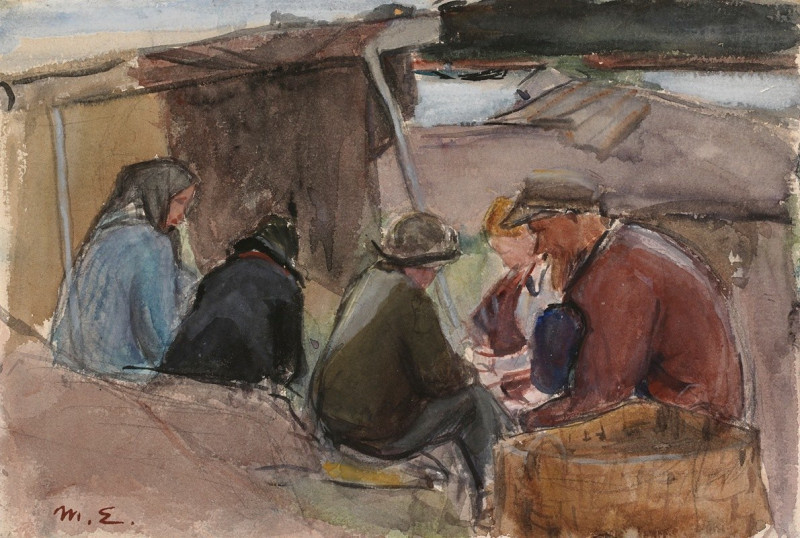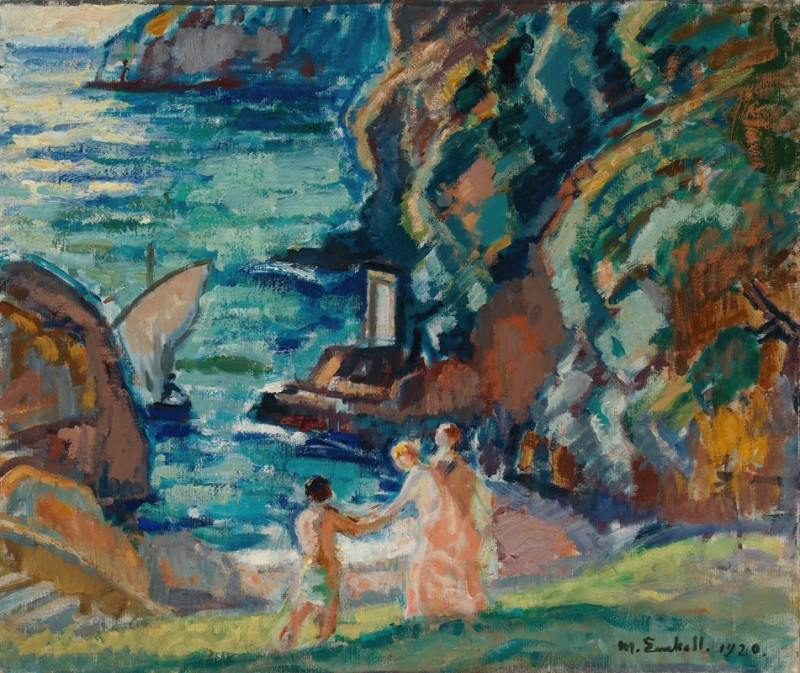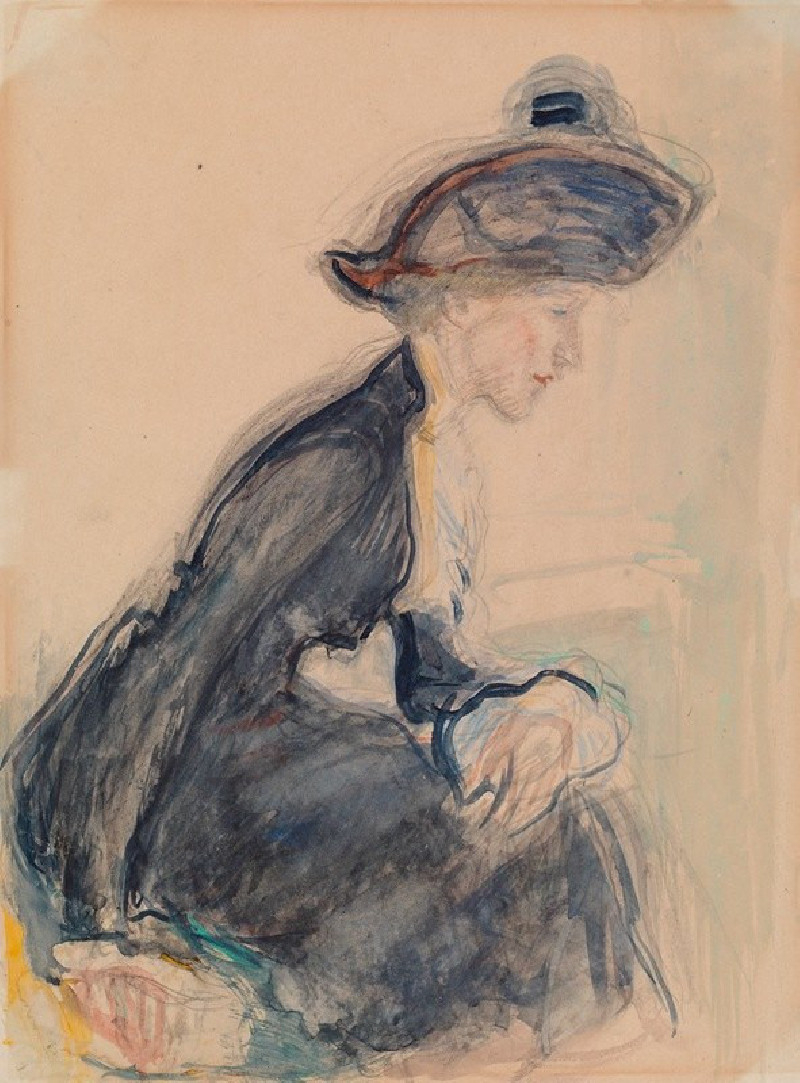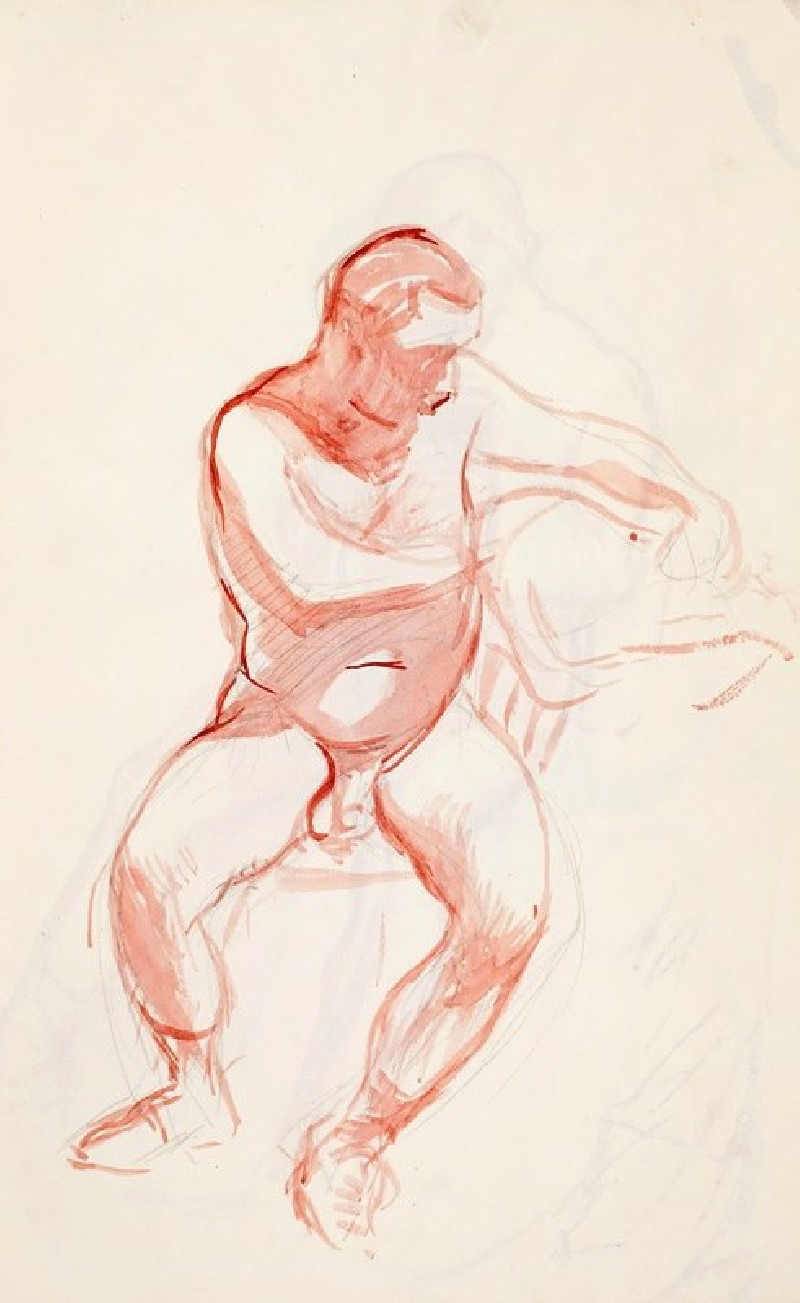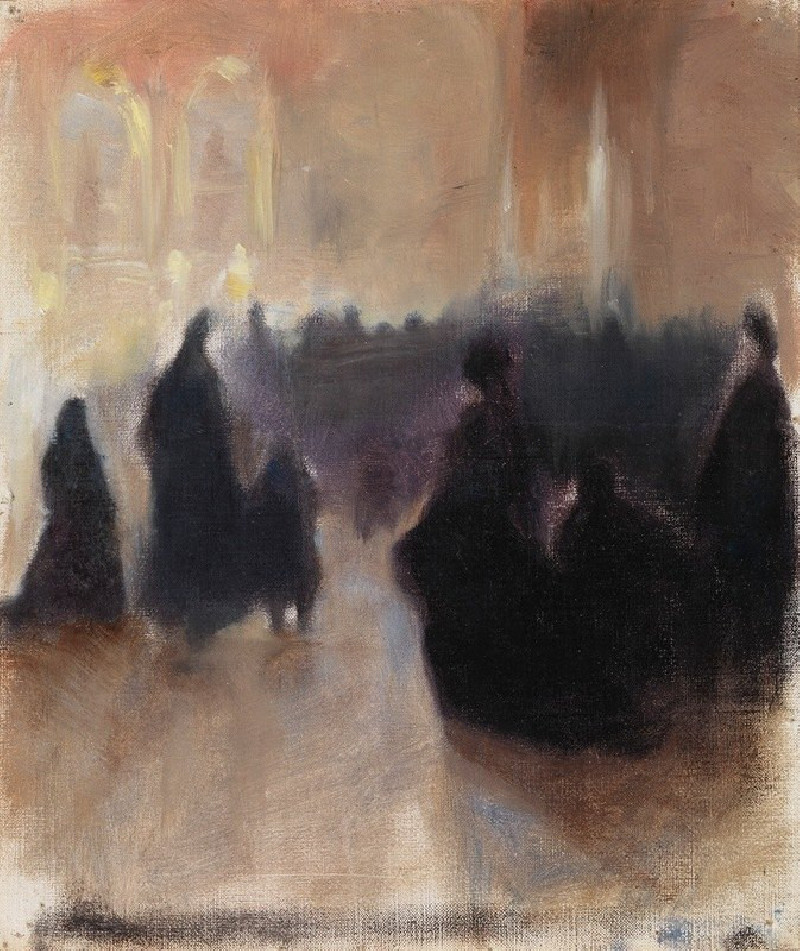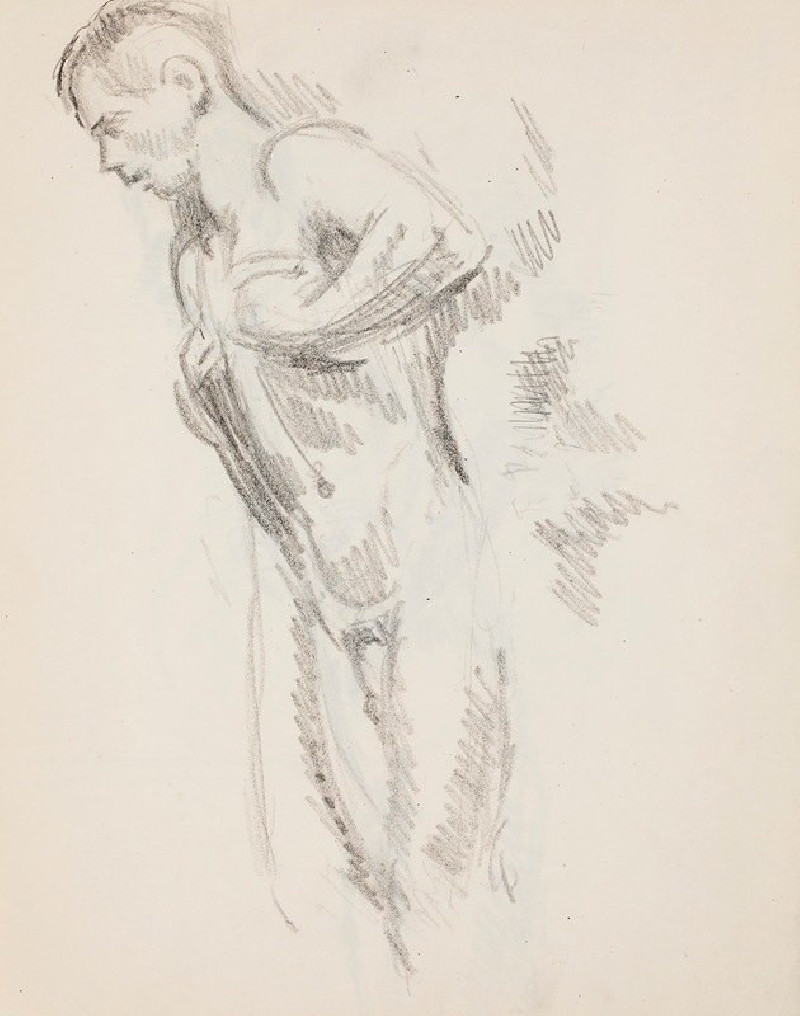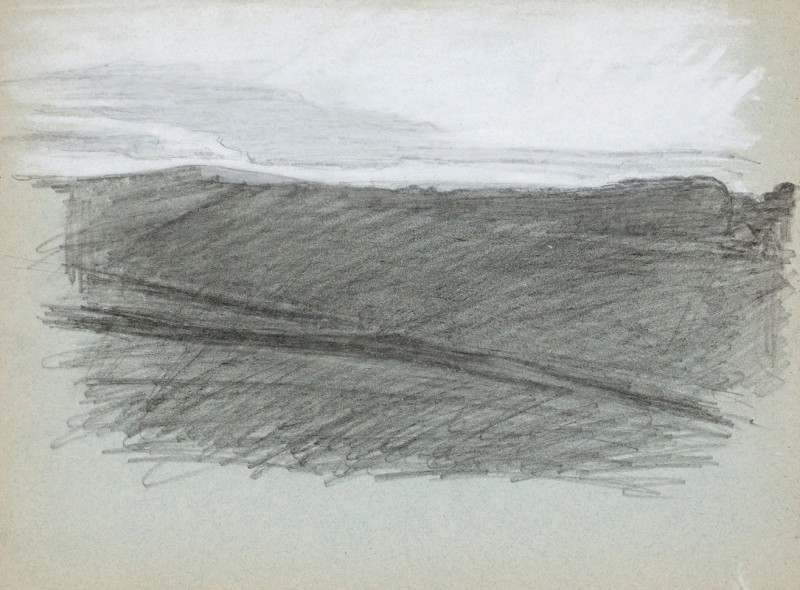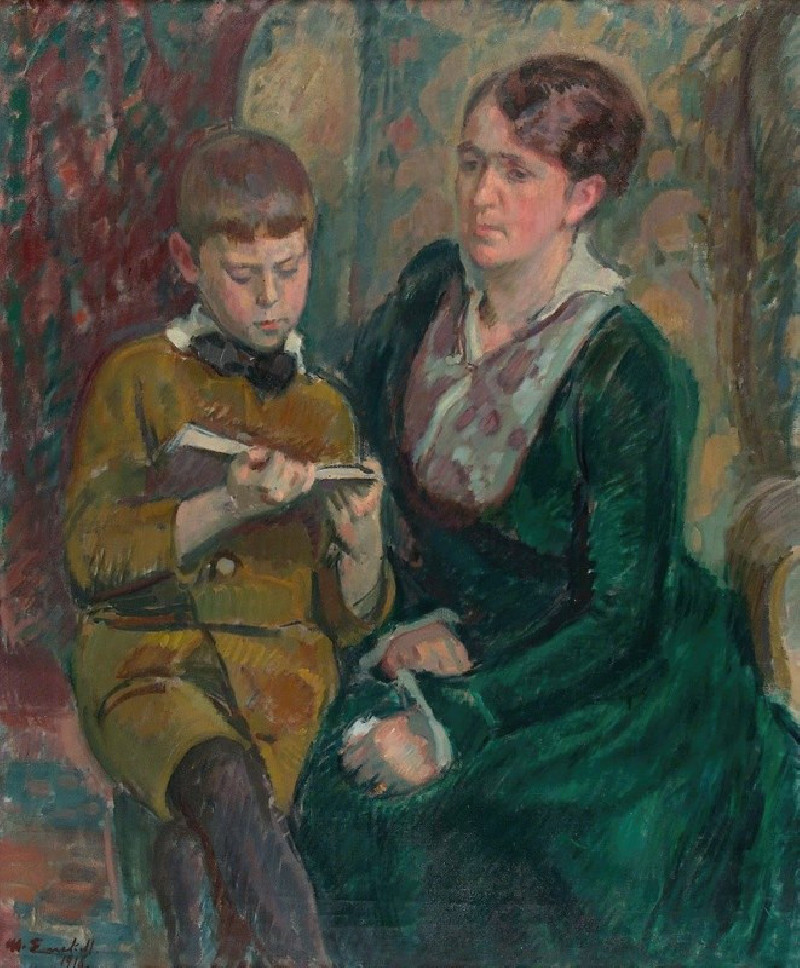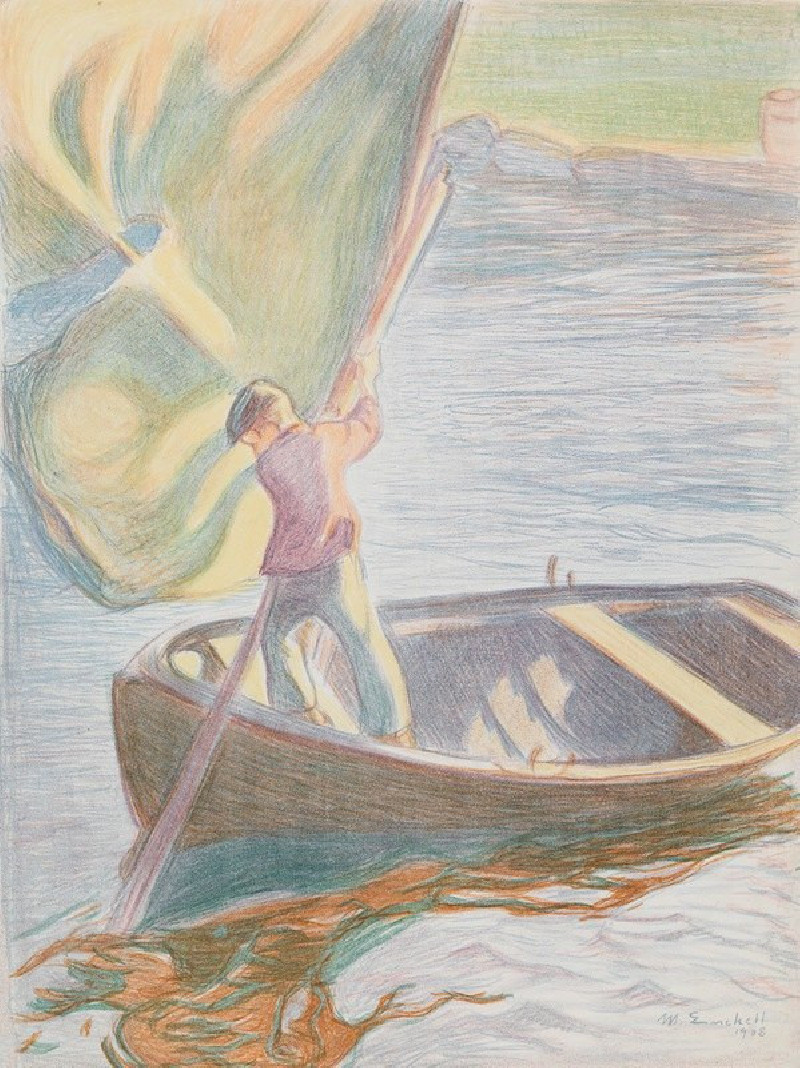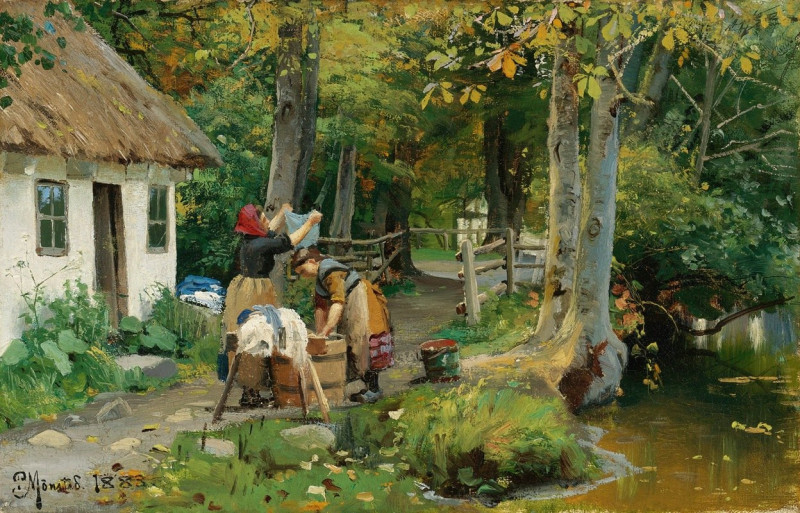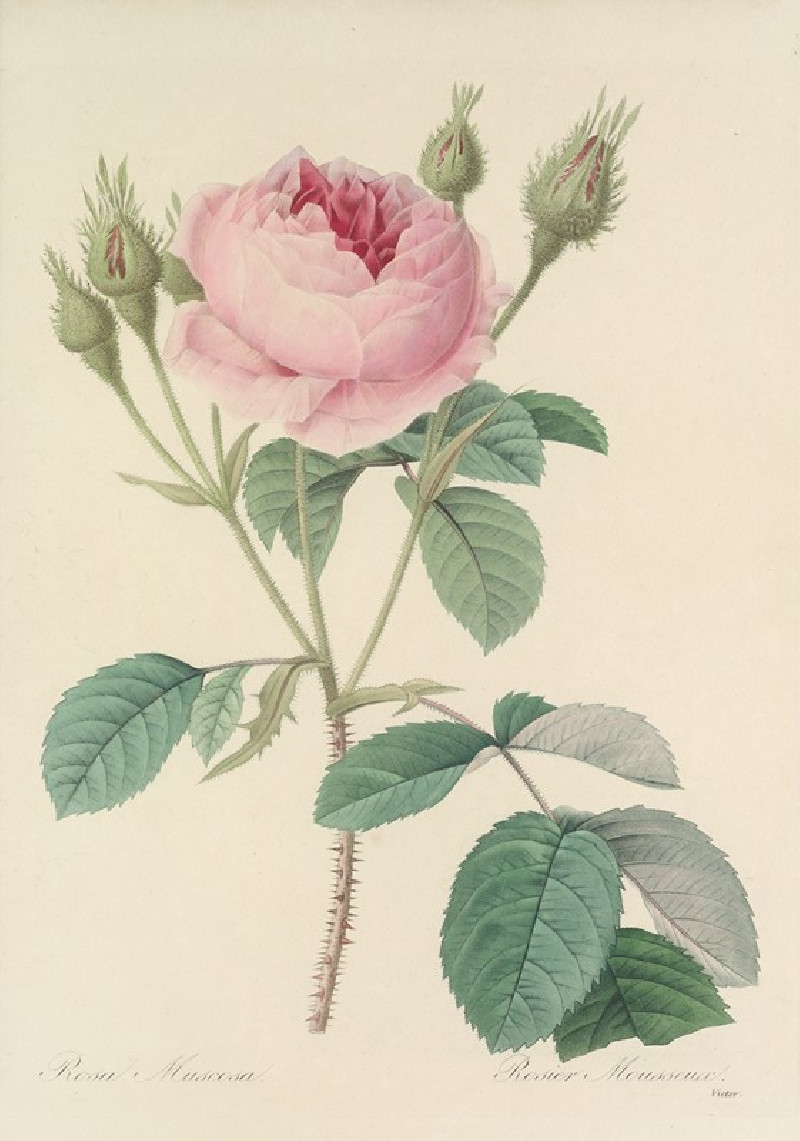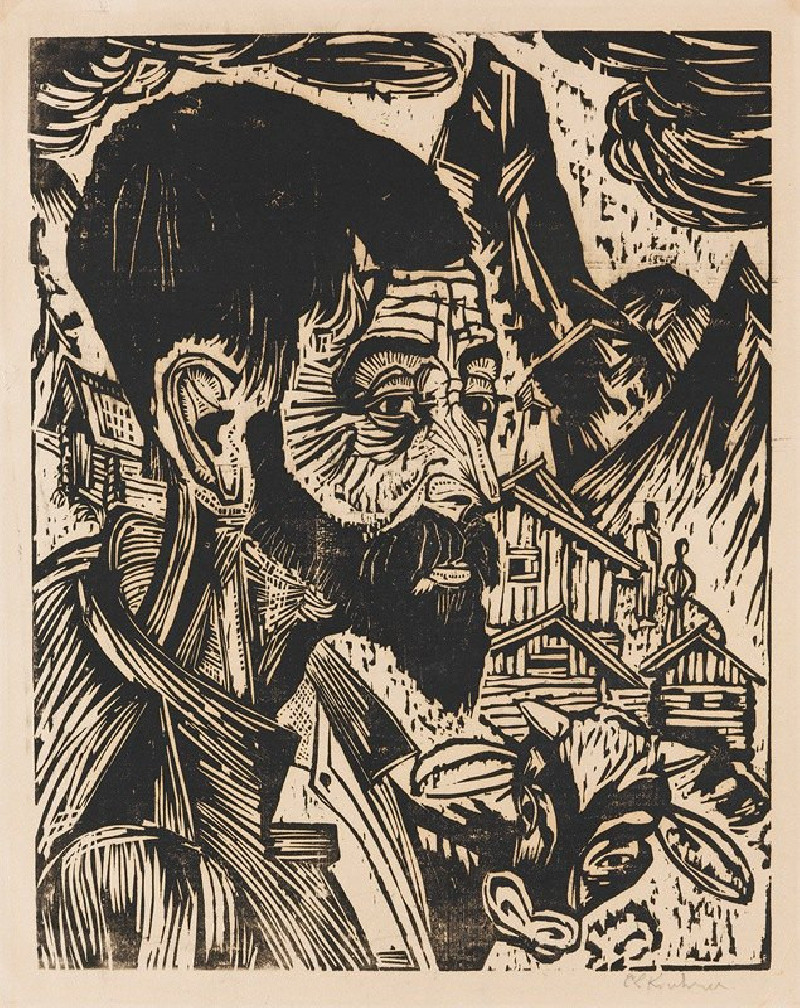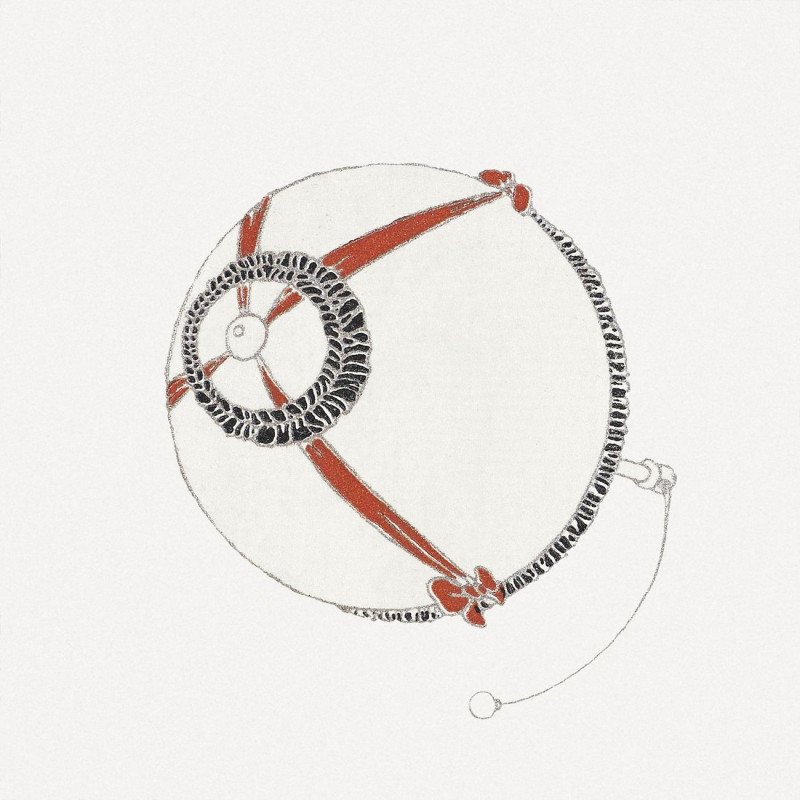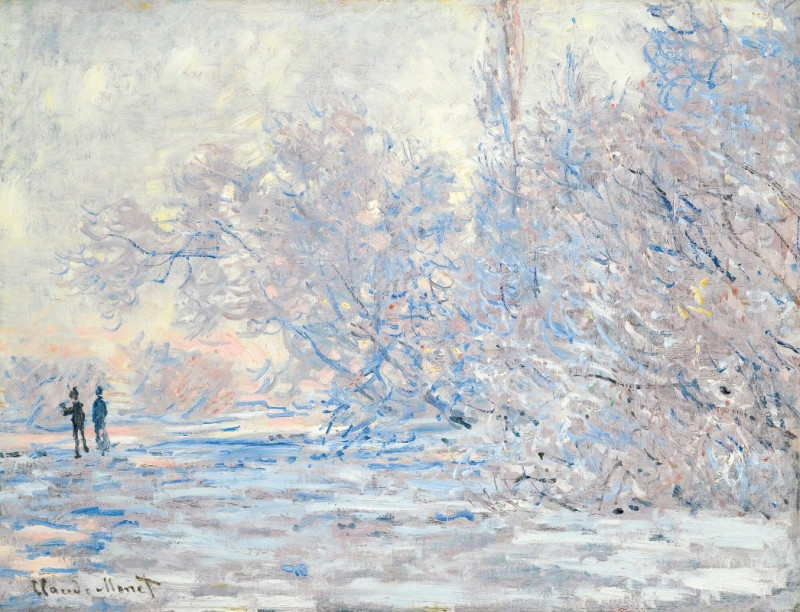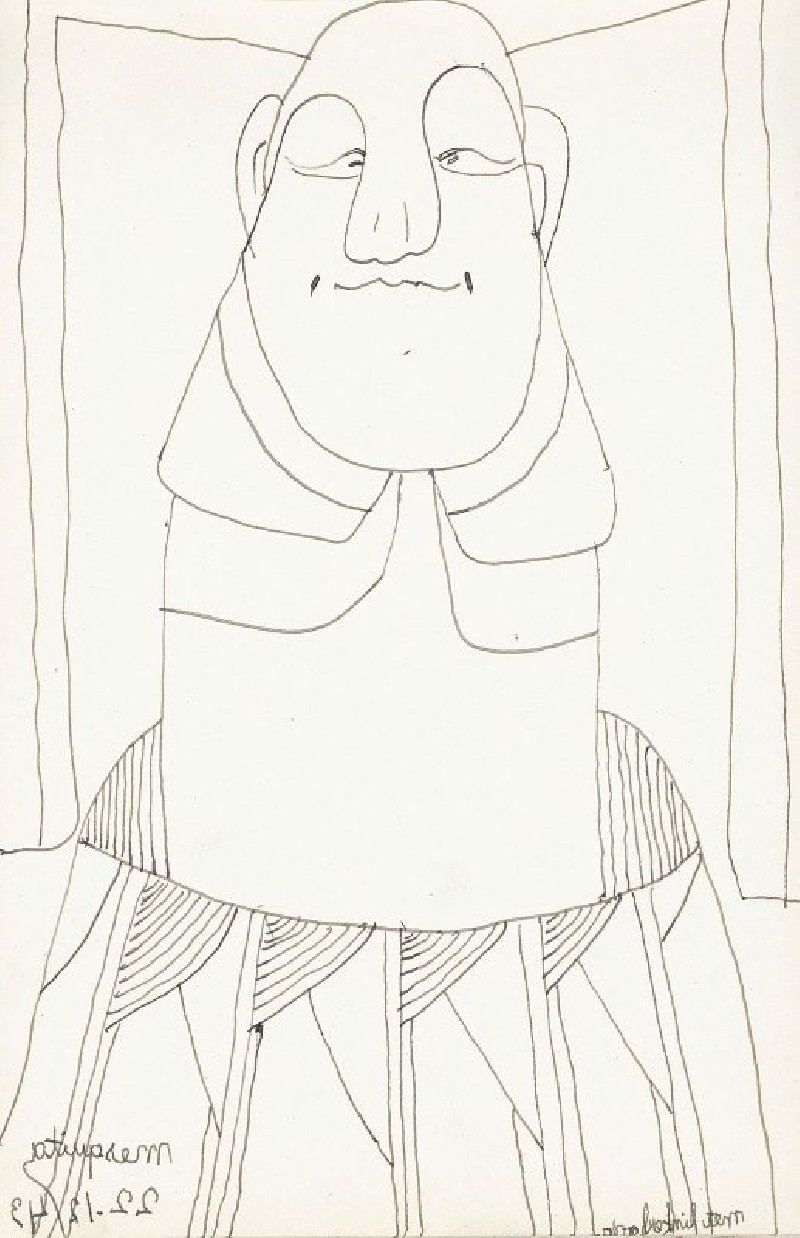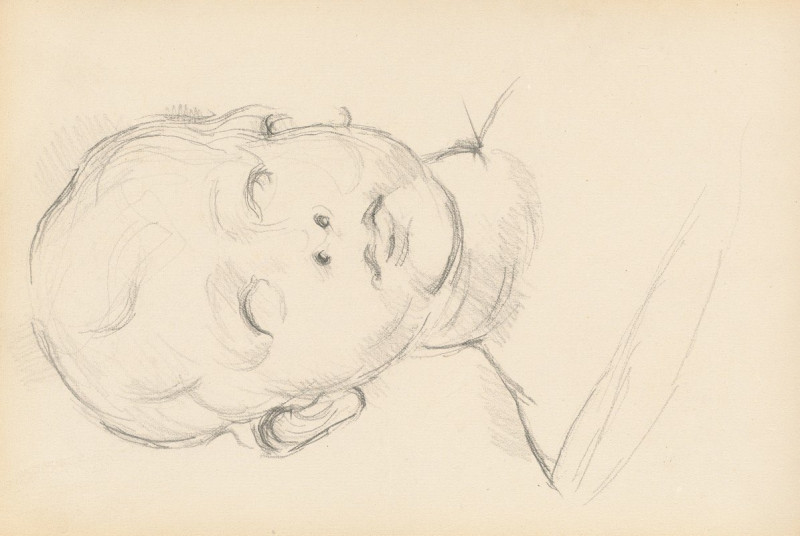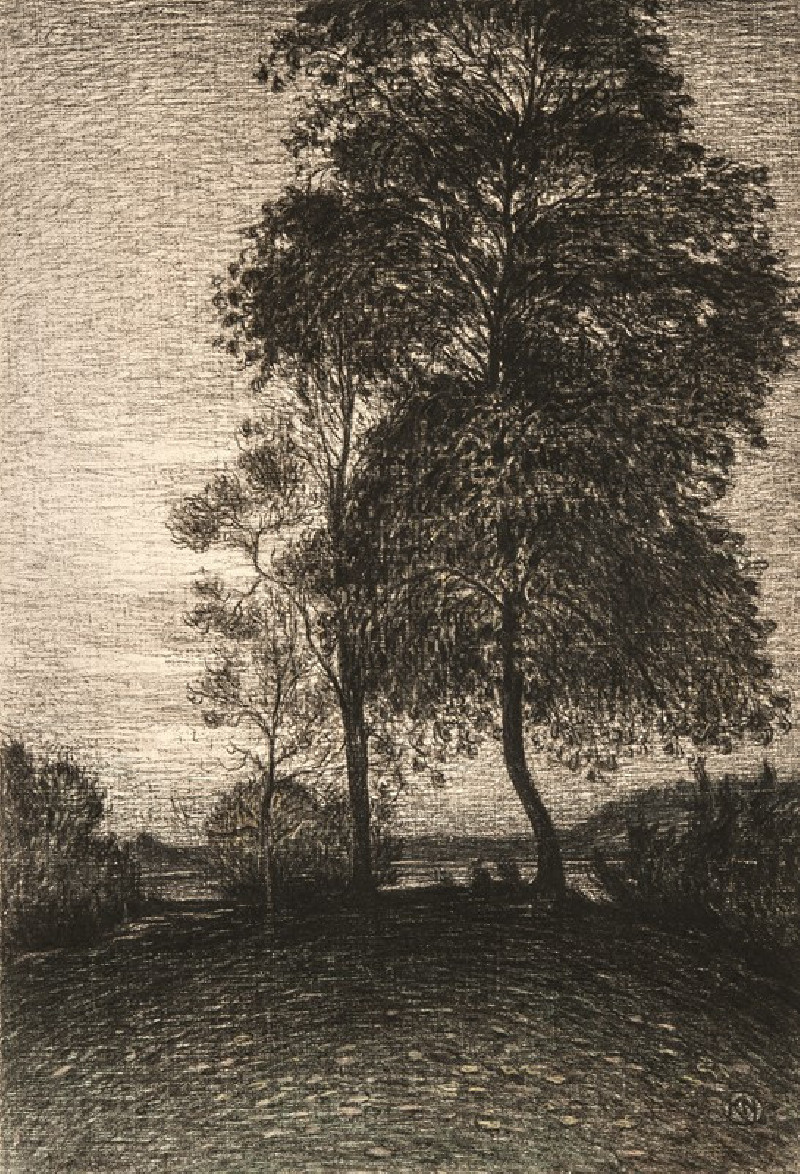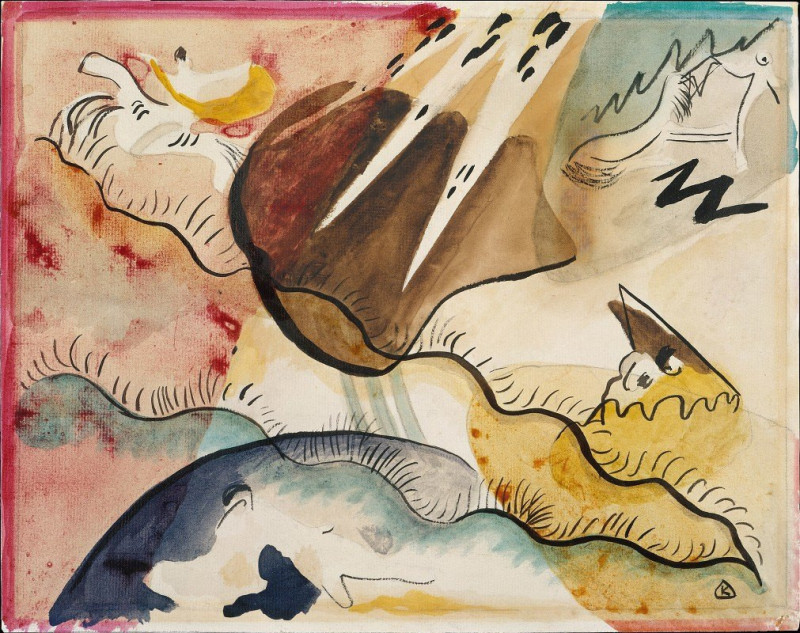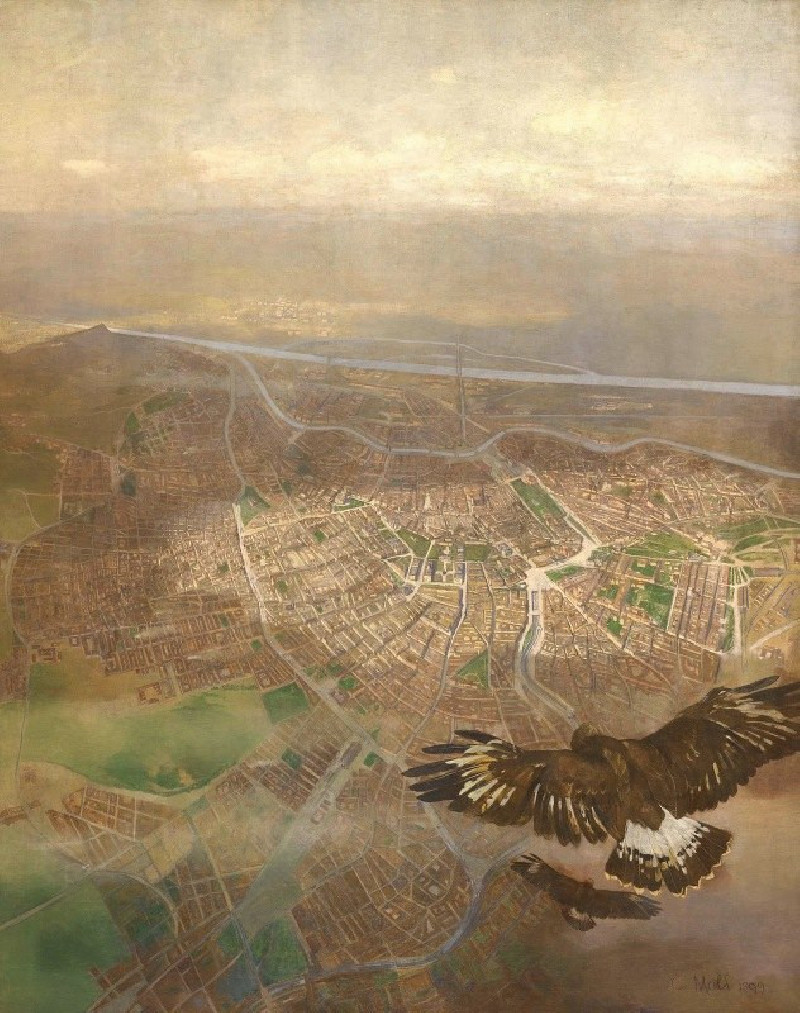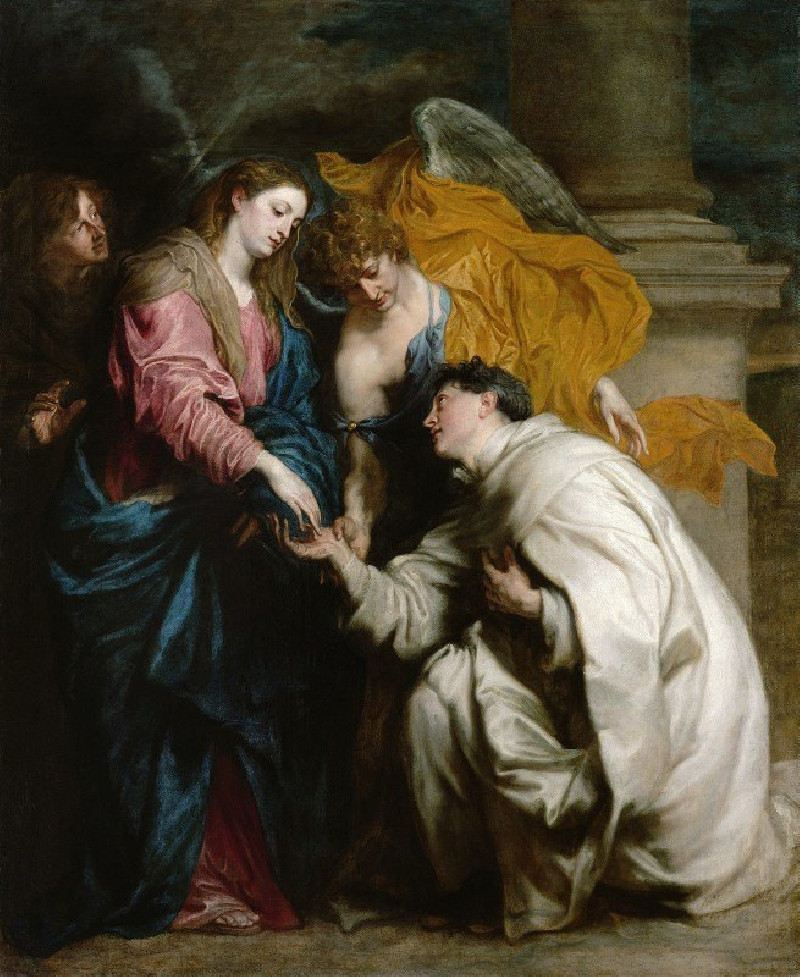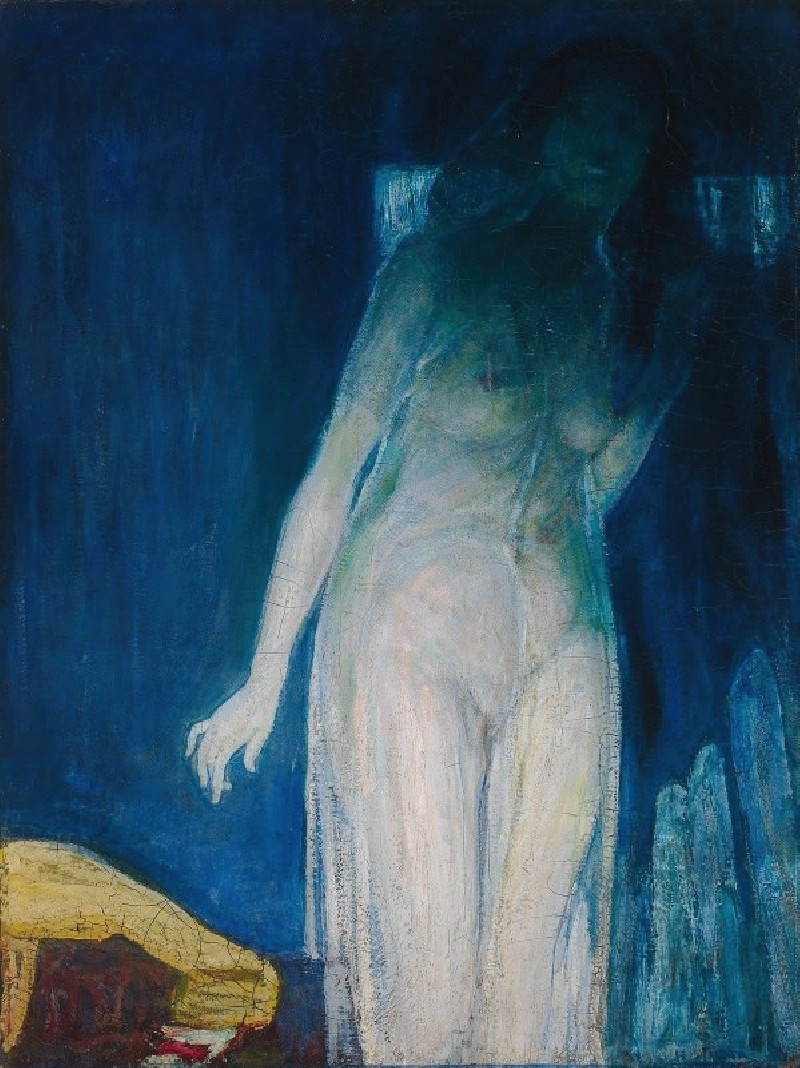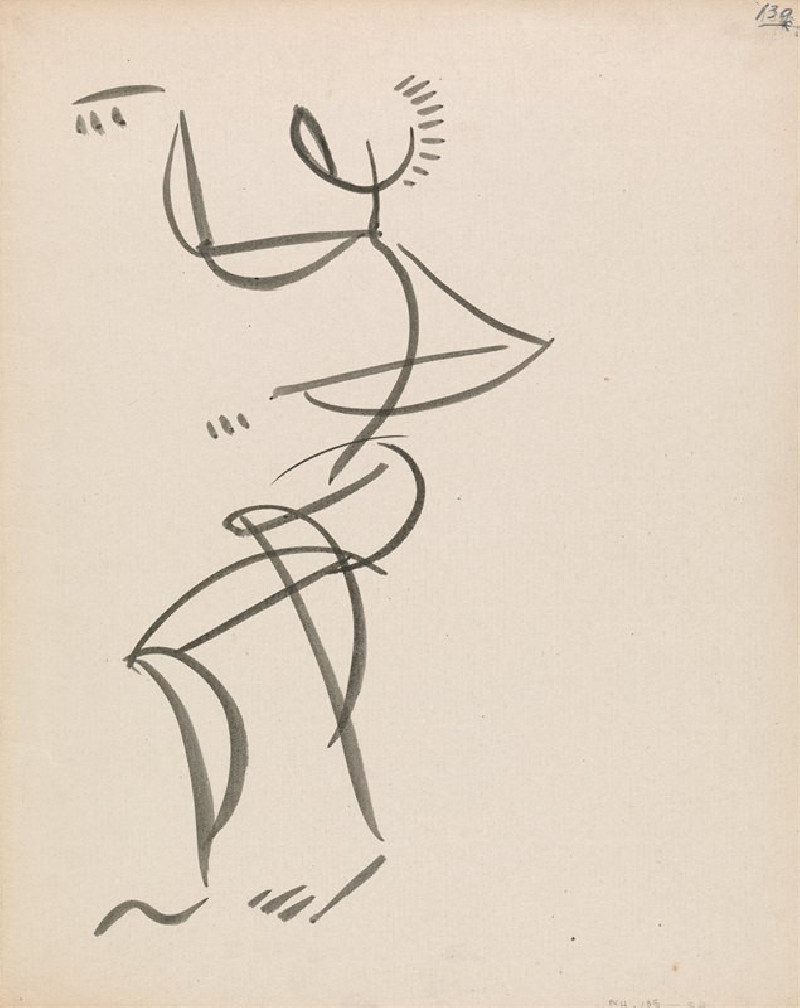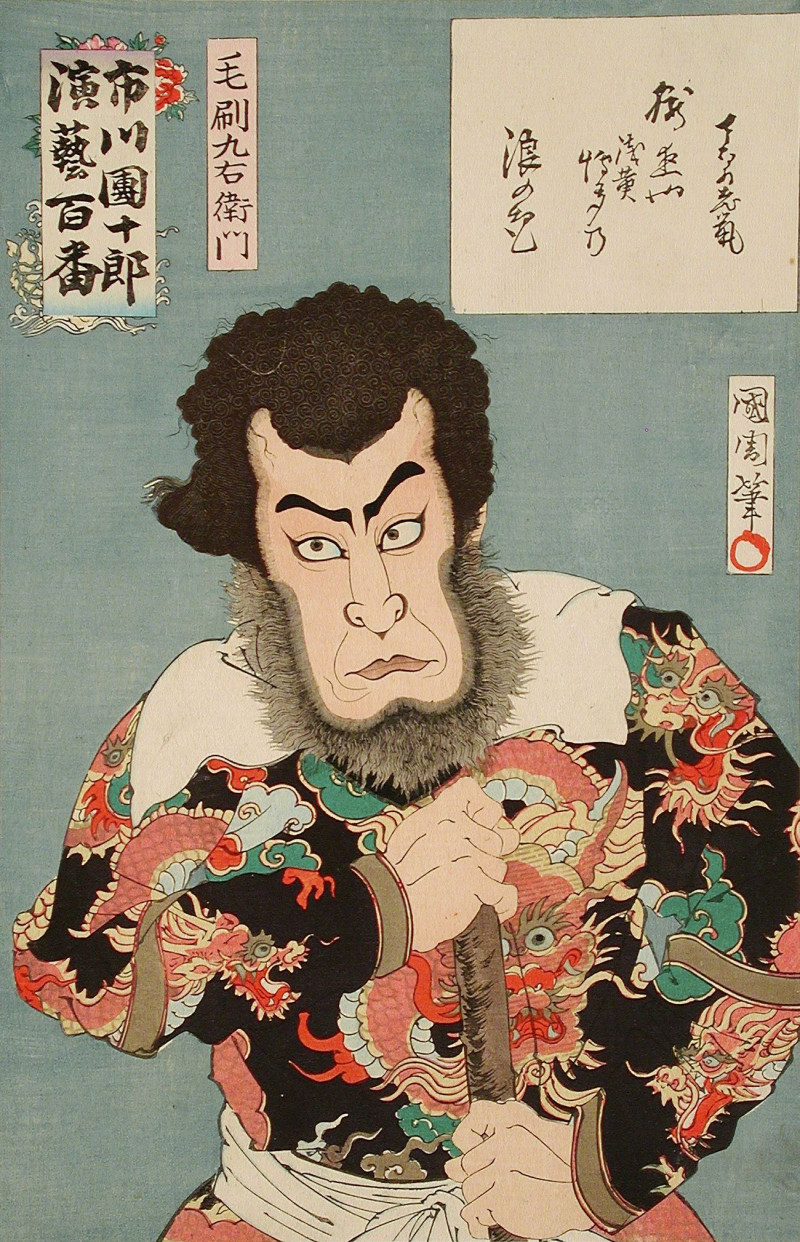Luonnoksia maalaukseen Haavoittunut nymfi (1912)
Technique: Giclée quality print
Recommended by our customers
More about this artwork
The painting presented here, titled "Luonnoksia maalaukseen Haavoittunut nymfi" (Sketches for the Painting Wounded Nymph) by Magnus Enckell, is a fascinating display of preliminary sketches that give us a glimpse into the artist's creative process. Created in 1912, this piece affords viewers a unique opportunity to see the genesis of Enckell’s ideas before they evolved into a final composition.The painting contains three separate sketches, each capturing different frames of the nymph's narrative. In the largest sketch, which dominates the top left of the canvas, vibrant and somewhat abstract brush strokes create an ethereal and dynamic portrayal of figures, likely nymphs, enveloped in a chaotic blend of dark and fiery colors suggesting turmoil or distress. The fluidity of the forms and the dramatic contrast of colors evoke a sense of movement, highlighting the emotional intensity of the scene.In sharp contrast, the two smaller sketches on the right and bottom are more restrained in color, focusing instead on figure composition and spatial arrangements. These drawings, executed more linearly and with less color saturation, provide a clearer view of the nymph in different states—perhaps one depicting her injury and another showing her receiving aid or solace.Collectively, these sketches not only represent an exploration of form and emotion but also illustrate how Enckell planned the spatial and emotional composition of his artwork. Each sketch reinforces the theme of vulnerability and suffering, while the varied approaches to color and outline emphasize different aspects of the narrative.
Delivery
Returns
Magnus Enckell (1870-1925) was a Finnish painter and graphic artist who was born in Helsinki. He studied at the Ateneum School of Art and later at the Académie Julian in Paris. Enckell was greatly influenced by the Symbolist and Art Nouveau movements, and his work often featured moody and dreamlike landscapes and portraits. He was one of the leading figures of Finnish art in the early 20th century, and his work helped to shape the development of modernist art in Finland. He passed away in 1925 at the age of 55, leaving behind a legacy that continues to inspire artists to this day.

